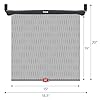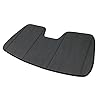Table of Contents
If you’ve ever stood in your garage, polisher in hand, and wondered, “How long does it take to polish a car?” you’re not alone. This is one of the most common questions in the world of auto detailing, and the answer is rarely simple. The process can range from a quick 2-hour enhancement to a multi-day, exhaustive correction marathon. The final timeline is a complex equation, influenced by the size of your vehicle, the condition of its paint, the tools you use, and the level of perfection you demand. This comprehensive guide will demystify the entire process, providing you with realistic timeframes for everything from a single-stage polish to a full multi-stage paint correction. We’ll break down the clock, task by task, so you can plan your project with confidence, whether you’re a weekend warrior looking to restore your daily driver’s shine or an enthusiast seeking show-car perfection.
What Does “Polishing a Car” Actually Mean?
Before we can accurately estimate the time involved, it’s crucial to define what we’re talking about. In the realm of professional detailing, “polishing” is a specific process designed to refine a car’s clear coat to remove or diminish minor imperfections. It’s distinct from both compounding (a more aggressive cutting process) and waxing (a protective procedure).
Polishing primarily targets:
- Swirl Marks: Those fine, circular scratches that cover a car’s surface and become visible in direct sunlight.
- Light Scratches: Superficial scratches that haven’t penetrated deep into the paint layers.
- Water Spots: Etched marks left by mineral-heavy water.
- Oxidation: The dull, chalky appearance that occurs as paint ages and breaks down from UV exposure.
- Holograms: Haze or swirl-like patterns sometimes left behind by improper machine polishing.
It’s a restorative process that levels the paint surface, removing a microscopic layer of clear coat to reveal a fresh, glossy, and defect-free layer beneath. Understanding this goal is key to understanding the time investment required to achieve it.
The Major Factors That Determine Your Polishing Time
The duration of your polishing project is not a one-size-fits-all number. Several key variables will dramatically impact how long you’ll be spending with your polisher.
Vehicle Size and Body Complexity
This is the most straightforward factor. A small coupe has significantly less surface area than a full-size SUV or truck. As a general rule, polishing a larger vehicle like an SUV can take up to 50% more time than a standard sedan due to its larger roof, sides, and additional body panels . Furthermore, vehicles with complex curves, sharp body lines, and intricate details (like splitters and vents) require more careful, time-consuming work than a car with simple, flat panels.
Paint Condition and Defect Severity
The starting point of your car’s paint is the single biggest wildcard. A well-maintained, garage-kept car that only needs a light gloss enhancement is a quick job. A daily driver that has never been polished, covered in swirls from automatic car washes, and suffering from moderate oxidation will require a much more intensive process. For severe defects, you may need to step up to a more aggressive cutting compound before you even begin polishing, which adds an entire additional step to the process.
Desired Level of Perfection and Correction
Your personal standards play a huge role. Are you looking for a “90% improvement” that looks fantastic in the sun? Or are you striving for “100% correction,” where every single defect is removed under a high-intensity inspection light? The latter is exponentially more time-consuming. The law of diminishing returns is very real in paint correction; achieving that last 5-10% of perfection can take as long as the first 90%.
Equipment and Experience Level
- Machine vs. Hand: Hand polishing is a labor-intensive process that can take 6 to 12 hours for a full car and is generally less effective for defect removal. Machine polishing is far more efficient, with times ranging from 4 to 8 hours for a typical vehicle .
- Tool Choice: A professional using a high-torque gear-driven orbital or rotary polisher will work faster than a beginner with a standard dual-action polisher, as the more powerful tool is less likely to stall and cuts defects more efficiently .
- Experience: A seasoned detailer has a refined technique, knows how to select the right pad and product combination quickly, and works more efficiently around complex areas. A beginner will naturally be slower as they learn the process.
The Polish Process: Single-Stage vs. Multi-Stage
- Single-Stage Polish (Enhancement): A one-step process using a fine polish to improve gloss and remove very light defects. This is the fastest approach.
- Multi-Stage Polish (Correction): A multi-step process, often starting with an aggressive compound to remove deep defects, followed by a less aggressive compound, and finished with a fine polish to refine the finish and remove any hazing. Each additional stage adds significant time.
Detailed Time Breakdown: From Wash to Protection
To truly understand where the time goes, you must look at polishing not as a single task, but as a multi-phase project. The actual machine buffing is only one part of the equation.
Phase 1: Preparation (1-3 Hours)
You cannot polish a dirty car. Proper preparation is non-negotiable for a good result and prevents you from grinding contaminants into the paint.
- Wheels and Tires: Thorough cleaning can take 45 minutes to 1 hour .
- Full Wash and Dry: A safe contact wash (like the two-bucket method) and thorough drying takes about 1 hour .
- Decontamination: Using a chemical decontaminant and a clay bar or clay towel to remove embedded bonded contaminants takes another 30 to 45 minutes .
- Taping (Masking): Taping off plastic trim, rubber seals, and emblems to protect them from polish splatter is a crucial step that takes 15 to 30 minutes but can save hours of clean-up later .
Phase 2: The Polishing Process (The Core Time Investment)
This is where the variables we discussed earlier come into play. The table below outlines the most common polishing scenarios and their typical timeframes.
Table: Estimated Polishing Times by Project Type
Phase 3: Final Steps and Protection (1-3 Hours)
Once the polishing is complete, the job isn’t finished.
- Final Wipe-Down: A thorough wipe-down of the entire vehicle with a panel wipe or diluted isopropyl alcohol to remove any residual oils or polish dust. This ensures a perfectly clean surface for protection. (30 minutes)
- Applying Protection: The freshly polished, pristine paint must be protected. This could involve applying a sealant, wax, or ceramic coating. A simple wax might take 1-2 hours, while a more complex ceramic coating can take 2-4 hours, plus curing time .
- Final Touches: Cleaning exterior glass, dressing tires and trim, and a final inspection. (30-60 minutes)
Real-World Time Allocation: A Professional’s Schedule
To see how this all comes together, let’s look at a real-world example from expert Mike Phillips, who breaks down the time for a full paint correction on an average neglected car, including compounding and polishing .
Table: Professional Time Breakdown for a Full Paint Correction
| Process | Time Required |
|---|---|
| Wash wheels and tires | 1 hour |
| Wash and dry entire car | 1 hour |
| Clay paint | 30 to 45 minutes |
| Do a Test Spot | 30 minutes |
| Paint Correction – Compound paint | 4-6 hours |
| Paint Correction – Polish paint | 2-4 hours |
| Install ceramic coating | 1-2 hours |
| Clean all exterior glass | 30 minutes |
| Dress any exterior plastic | 30 minutes |
| Dress tires | 30 minutes |
| Final inspection | 15 minutes |
| Total Time | 12 to 17 hours |
This schedule highlights a key point: the actual compounding and polishing (6-10 hours) is just one part of a much larger 12-17 hour project. This is why a “quick polish” is often a half-day affair, and a full correction is a multi-day commitment.
Machine Polishing vs. Hand Polishing: A Time and Results Comparison
The choice between machine and hand polishing is one of the biggest determinants of both your final result and the time it takes to get there.
- Machine Polishing: This is the recommended method for efficiency and results. A dual-action polisher is safe for beginners and can dramatically speed up the process. As noted, a full machine polish typically takes 4 to 8 hours . The machine provides consistent motion and pressure, allowing abrasives to work effectively to level the paint surface, something nearly impossible to achieve by hand.
- Hand Polishing: This is an extremely labor-intensive process that can take 6 to 12 hours for a full vehicle and is generally only recommended for spot repairs, very good condition paint, or applying glazes . It is nearly impossible to generate enough consistent heat and friction by hand to effectively remove swirl marks and scratches. The results are often superficial and short-lived compared to machine polishing.
How to Streamline Your Process and Save Time
Efficiency doesn’t mean cutting corners. It’s about working smarter. Here are expert tips to speed up your paint correction process without sacrificing quality .
- Always Do a Test Spot: Spend 30 minutes to find the least aggressive pad and product combination that works on the worst panel. This prevents you from wasting hours using an ineffective process on the entire car and then having to redo it .
- Tape Trim First: The 15-30 minutes spent taping off plastic trim saves hours of frustrating clean-up trying to remove dried polish splatter from textured surfaces later .
- Use the Right Polisher: For experienced users, a gear-driven orbital or rotary polisher can remove defects faster than a free-spinning random orbital, which can stall on curves .
- Count Your Section Passes Aloud: This prevents you from losing track and doing more passes than necessary, which wastes time and unnecessarily removes clear coat .
- Work Top-Down and Middle-Out: Start at the highest point (roof) and work your way down to prevent splatter from falling onto areas you’ve already polished. On large panels, start in the middle and work outwards to avoid dragging the power cord across finished paint .
Special Considerations and Frequently Asked Questions
How long does it take to polish a car by hand?
As detailed above, hand polishing a full car can take 6 to 12 hours and is only advisable for paint in very good condition or for small areas . For anything more than a quick touch-up, machine polishing is always the more effective and, ironically, faster choice.
How long after spray painting a car can you polish it?
After a fresh paint job, you must wait for the paint to cure. While it can take up to a month for paint to fully harden, the initial cure is typically reached after 24 hours. It is generally safe to sand and polish the new paint after this 24-hour period, but always follow the specific recommendations of your paint manufacturer .
How often should I polish my car?
Polishing is an abrasive process that removes a tiny amount of clear coat. Therefore, it should not be done too frequently. For a well-maintained vehicle, a polish once or twice a year is typically sufficient to maintain the finish . Between polishing sessions, focus on proper washing techniques and maintaining your protective sealant or wax to keep the car looking its best.
Conclusion: Planning Your Perfect Polish
So, how long does it take to polish a car? As we’ve seen, the answer is a resounding “It depends.” A simple single-stage enhancement on a small, well-cared-for car could be wrapped up in an afternoon (3-5 hours). A full multi-stage correction on a large, neglected SUV is a serious commitment that can easily span a weekend or more (12-20+ hours).
The key to a successful and efficient polishing project is honest assessment and preparation. Assess your vehicle’s paint condition, define your goals, and allocate time not just for the polishing itself, but for the essential preparation and protection stages that bookend it. By understanding the factors at play and leveraging the right techniques and tools, you can transform your vehicle’s appearance in a predictable timeframe, restoring that deep, reflective shine that makes all the effort worthwhile.
Key Takeaways
- There is no single answer; polishing time ranges from 3 to 20+ hours, heavily influenced by vehicle size, paint condition, and desired results .
- Machine polishing is far more efficient than hand polishing, cutting the total project time roughly in half while delivering superior, more lasting results .
- The actual buffing is only part of the job; thorough washing, decontamination, and taping are critical pre-steps, while applying protection is a mandatory final step .
- A full paint correction on a neglected vehicle is a major project. A professional-level job typically takes 12 to 17 hours from start to finish .
- To save time, always perform a test spot and tape off trim before starting. These small investments of time prevent much larger time-wasters later in the process .
















































